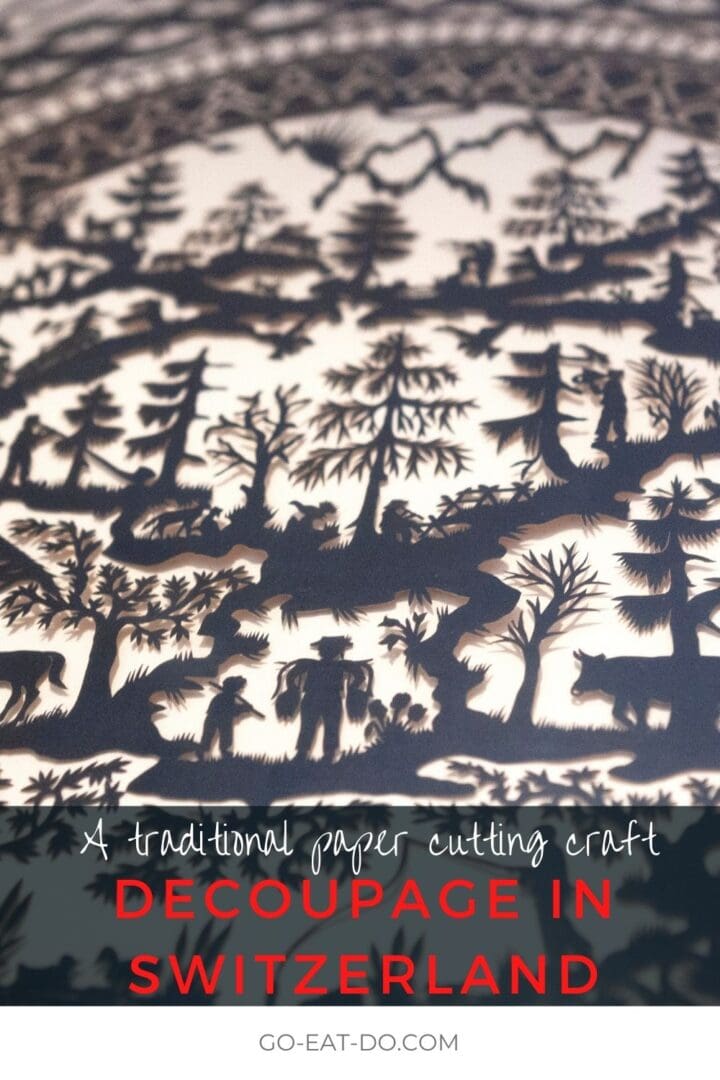Stuart Forster tries decoupage in Switzerland, a popular paper cutting craft and artform that’s an Alpine tradition.
Scalpel in hand, I hesitate before making my incision. “That’s it, cut along the line you’ve drawn,” says Corinne Karnstädt, encouraging my first attempt at decoupage, the paper cutting art form at which she excels.
Exquisite, framed examples of decoupage are displayed around us. They hang within frames on the walls of the Museum of the Pays d’Enhaut in the small Swiss town of Château d’Oex.
The expertly crafted examples of decoupage depict idealised scenes of traditional Alpine life. Their creators were clearly a lot more skilled with a blade than I am. They have managed to cut away sections of heavy black paper to create silhouette-like shapes of trees, farmers, cows and chalets.
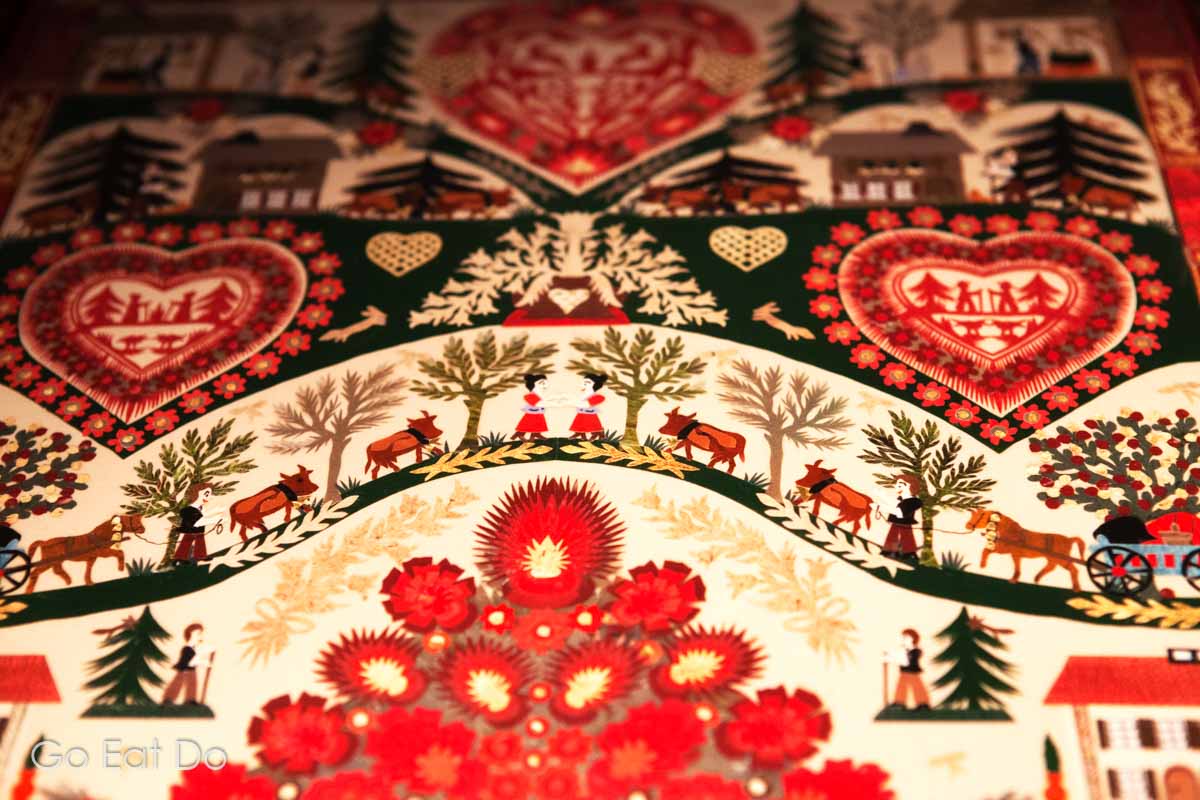
Decoupage in Switzerland
The real skill, Corinne shows me, is in creating a design on a single sheet of coloured paper. Finished works are mounted on a white background to show them off.
Corinne comes from La Tine and became interested in decoupage in 2008 after seeing the works of Hans Jakob Hauswirth (1809 – 1871) and Louis Saugy (1871 – 1953). They are recognised as leading exponents of the art of paper cutting.
Works by Hauswirth and Saugy count among the 60 or so works on display in the Museum of the Pays d’Enhaut. Cowbells, military artefacts and skis dating from the 14th century are also displayed.
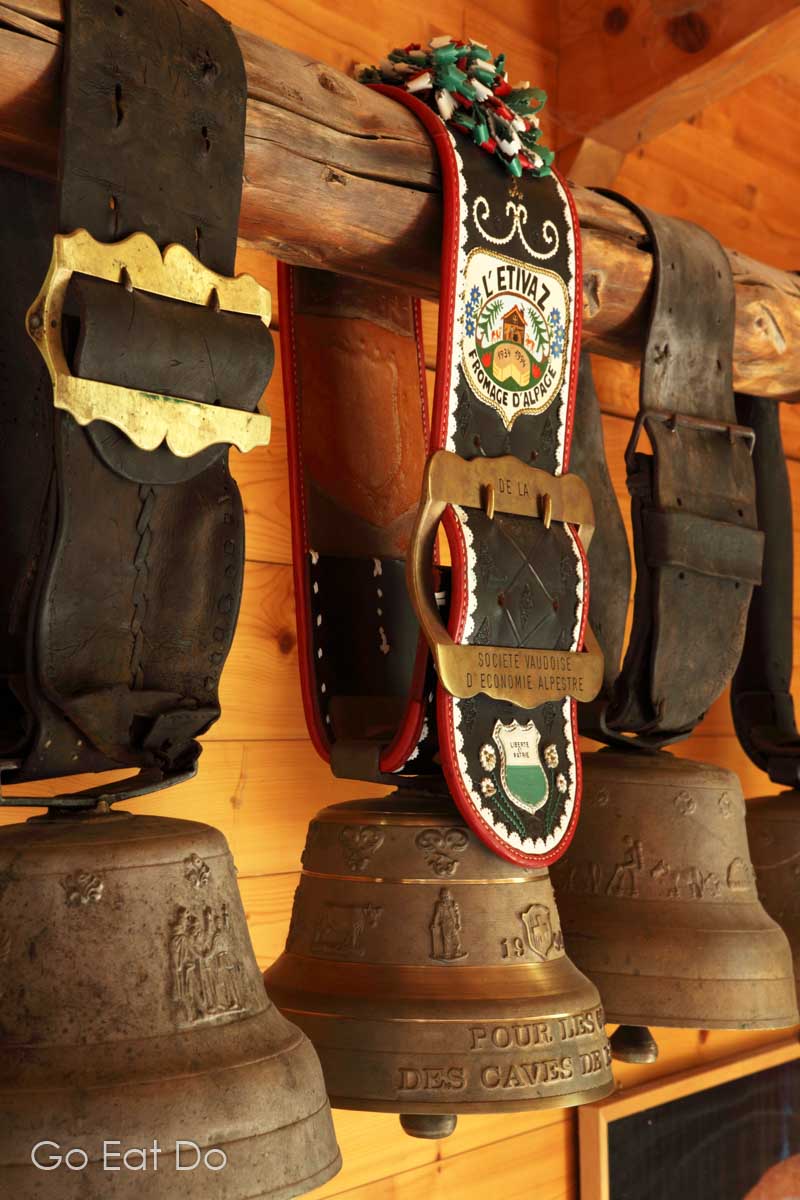
Decoupage Courses in Switzerland
What started as a self-taught hobby has become a key part of Corinne’s daily life. She now offers decoupage courses in Switzerland.
Corinne is one of around 500 members of the Swiss Association for the Friends of Paper Cutting and has written a book on decoupage.
Knowledgeable about the history of decoupage, Corinne explains that its origins can be traced to central Europe during the 16th century. Traditionally, it’s also practised in the Balkans and in China.
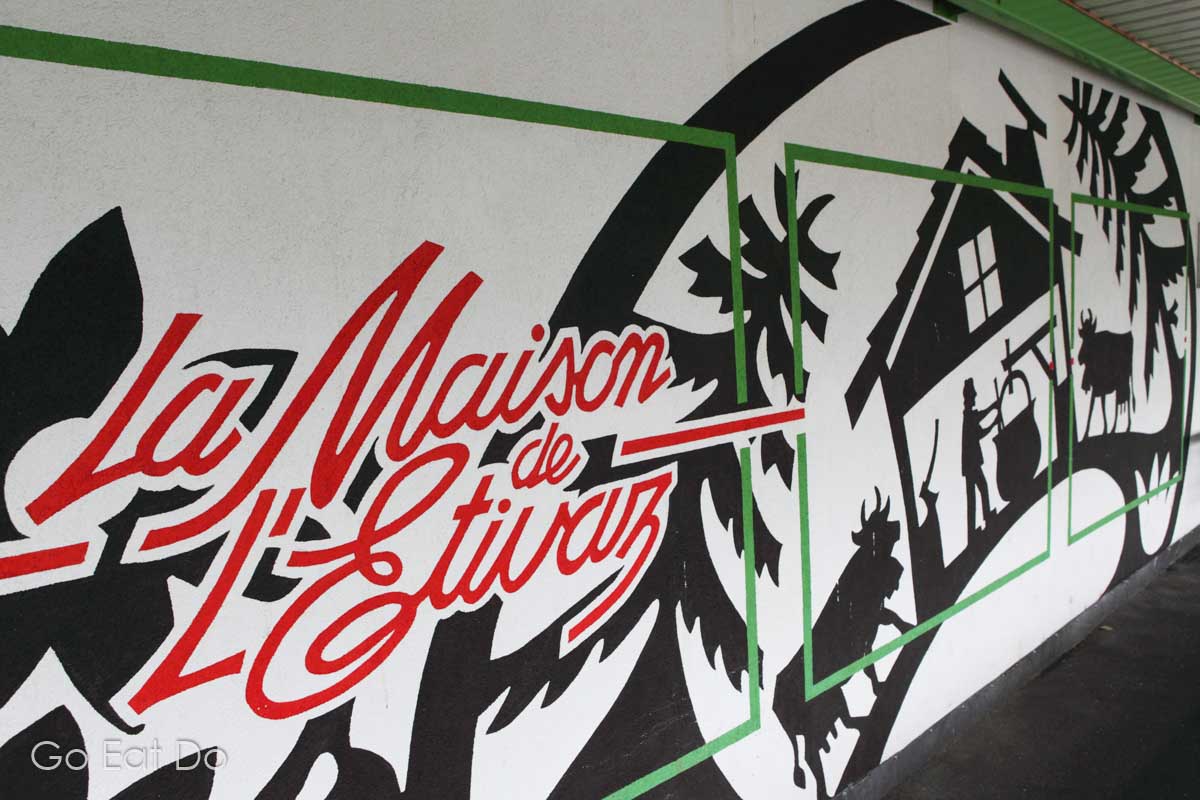
Depictions of traditional Swiss scenes
This artform has close associations with the Pays d’Enhaut region. “Many works of decoupage from le Pays-d’Enhaut tell the story of the life of farmers going up the mountains with cows to make cheese – Poya – and when they come down into the valley in September – Desalpe – for the winter,“ explains Corinne.
Intrigued, I ask if decoupage scenes must be traditional.
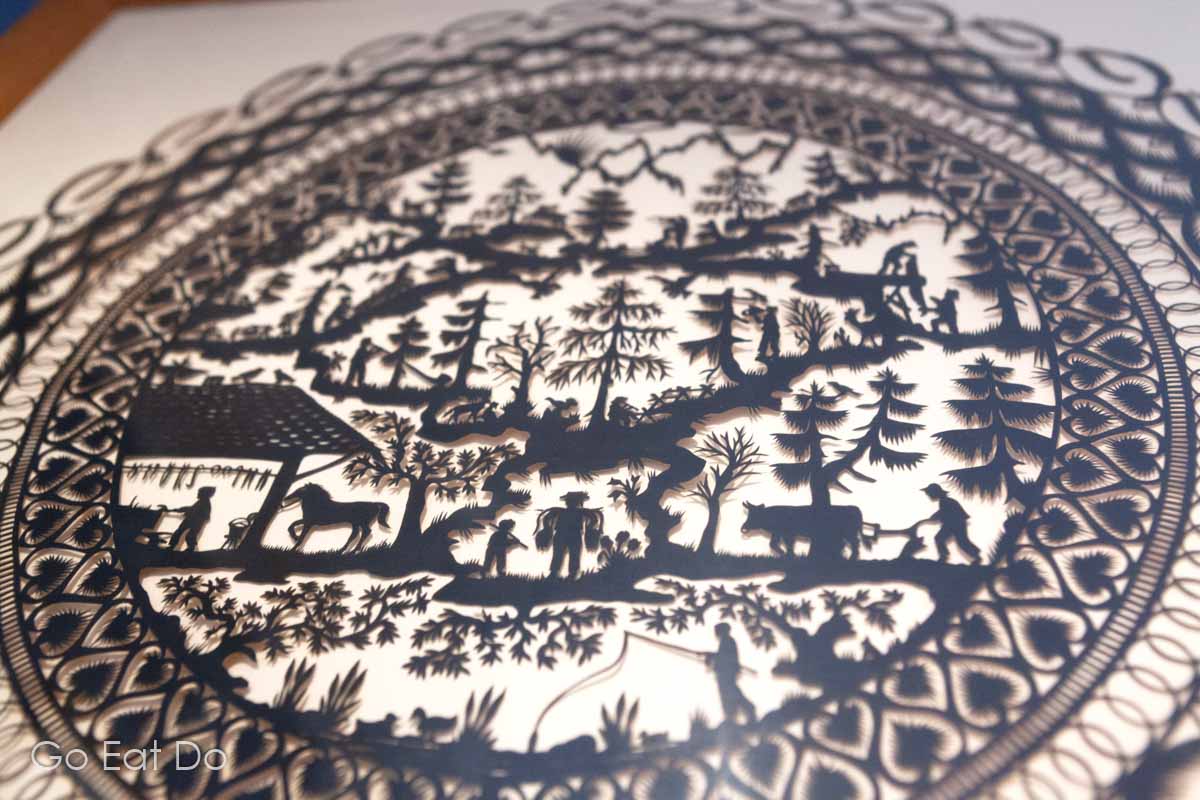
“I find inspiration all around me. I observe a lot many things and, after that, I draw my motifs. I often use the internet. I love to represent fashionable ladies in my decoupage. I mix the modern world with Alpine life. In my work you can find some ladies with stilettos and mini skirts going up the mountain with cows and farmers,” says Corinne.
”To start decoupage you need a cutter, black paper and a pencil. You also need to learn the base technique of cutting and be competent in drawing. Drawing is the most important element in decoupage. When you’re finished drawing you need to cut away all the little pieces of paper and open it. There are no rules to make decoupage; each artist can do as they want, there are no limits,” she says.
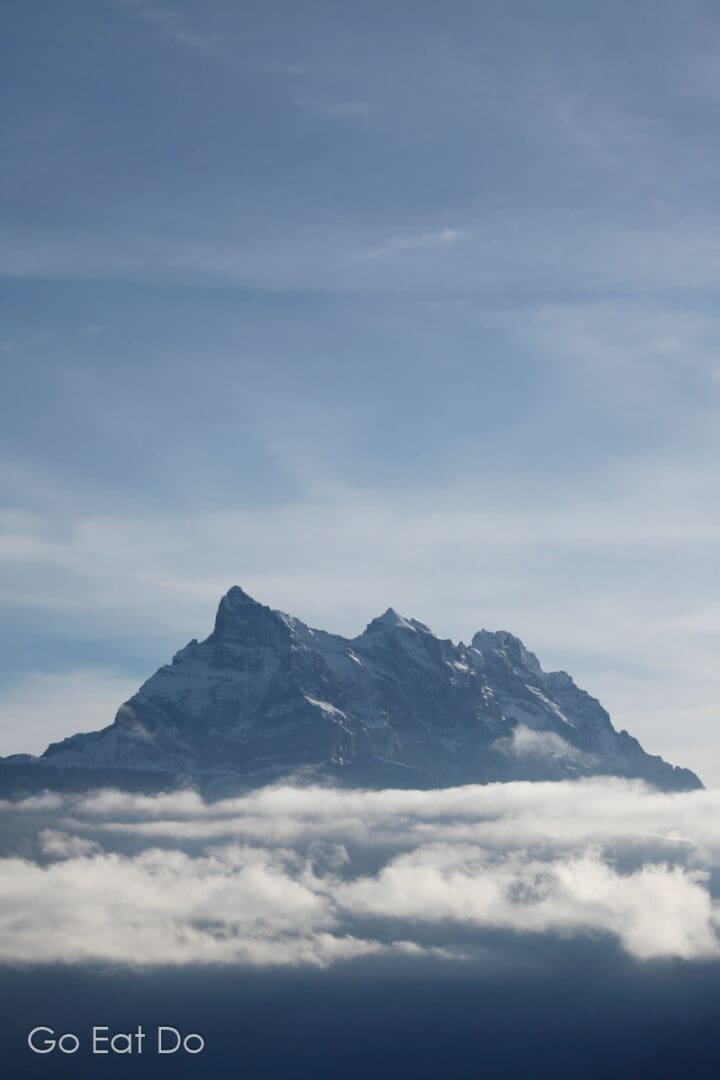
Alpine paper cutting craft
Patience is also essential while practising this Alpine paper cutting craft. I learn that it’s possible to glue errors but they’ll remain visible. As a consequence, some practitioners of decoupage prefer to throw away damaged pieces.
My cuts look jagged in comparison to the smooth, elegant lines on the pieces produced by Corinne. She doesn’t count how long she spends on each piece and regards them as labours of love.
Each year she now participates in the valley’s Christmas market and creates pieces for calendars, postcards and diaries. She also creates bespoke works for a broad range of clients.
On a folded piece of black paper, Corinne sketches a series of lines and then makes cuts using a scalpel, revealing a snowman and figures wearing scarves. Unfolding it reveals a symmetrical Christmas scene complete with mountains and a starry sky. She makes it look easy.
Impressed by decoupage, I find this introduction to the paper cutting craft enjoyable but doubt I’ll ever be able to match my teacher’s deft touch.
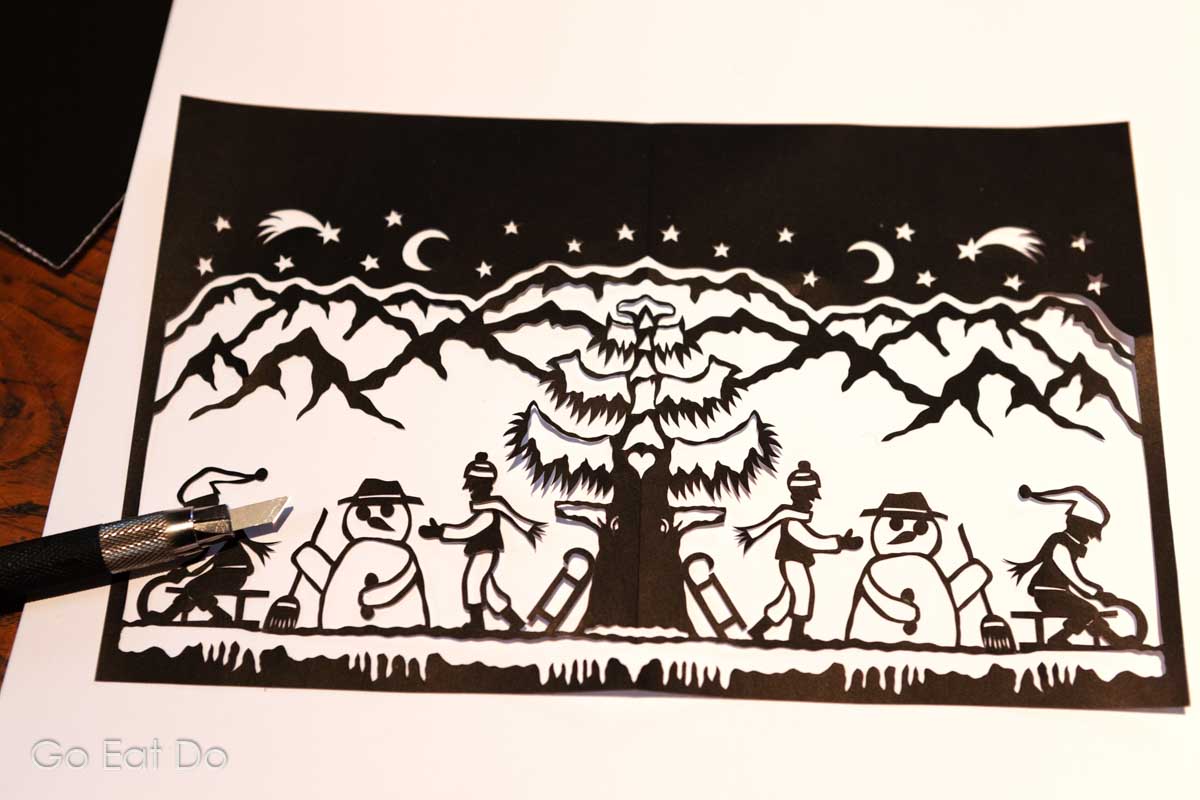
Further information
To plan activities as part of a holiday in the region around Château d’Oex, view the Lake Geneva Region and Switzerland Tourism websites.
Photos illustrating this post are by Why Eye Photography.
Stuart Forster, the author of this post, is an award-winning travel writer. He has visited Switzerland many times. In 2020 Stuart was named Travel Writer of the Decade at the Netherlands Press Awards for travel-related work about Dutch destinations.
Visiting the Museum of the Pays d’Enhaut is just one thing to do while visiting Switzerland’s Lake Geneva Region in winter or the Canton of Vaud in the summertime.
If you enjoyed this post why not sign up for the free Go Eat Do newsletter? It’s a hassle-free way of getting links to posts on a monthly basis.
‘Like’ the Go Eat Do Facebook page to see more photos and content.
A version of this post was first published on Go Eat Do on 10 November 2014.
